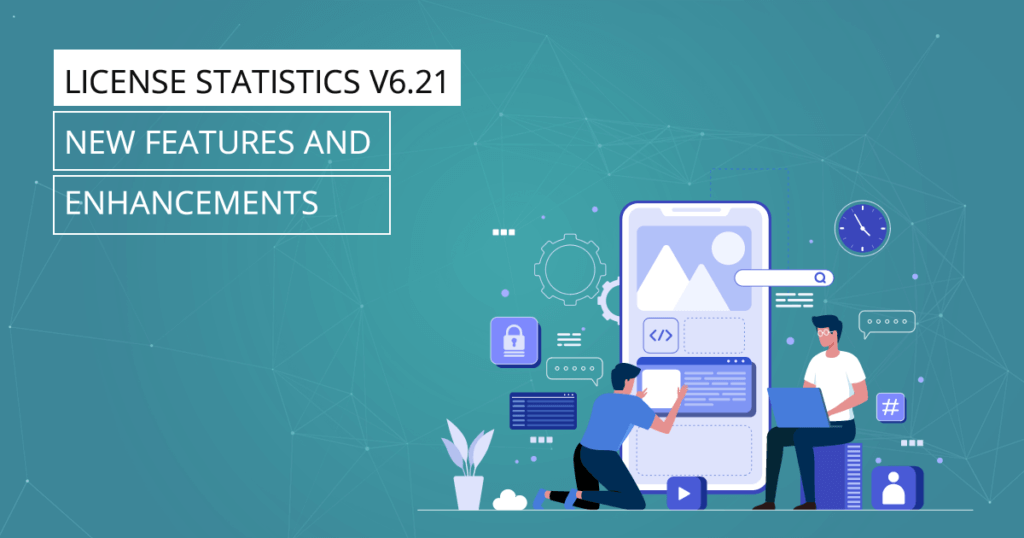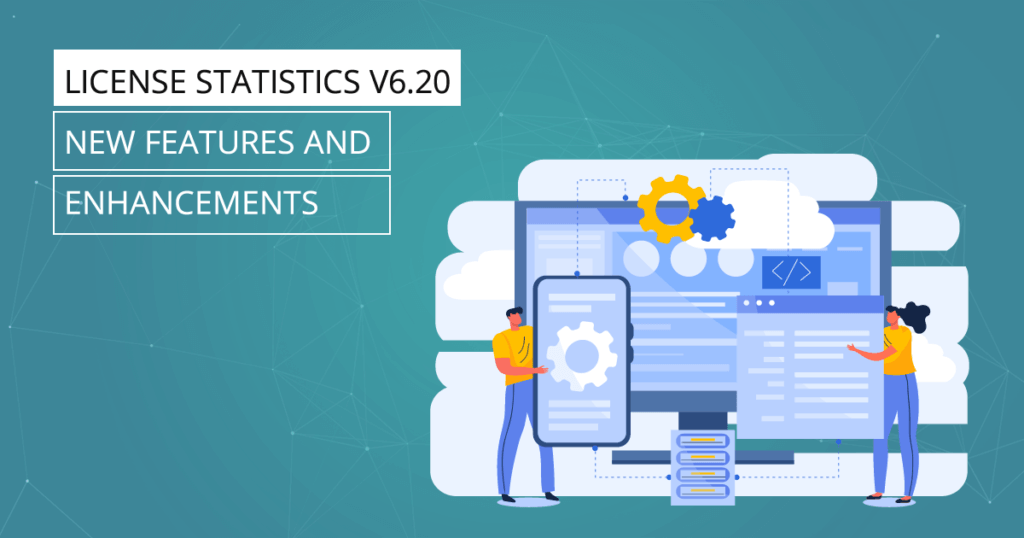With License Statistics version 6.21, we’ve introduced new features and enhancements that reduce host duplication and simplify license activation, as well as improving performance, consistency of report grids, and data validation. Read on to find out more about what’s new in License Statistics v6.21.
Duplicated host merging
In most cases, both remote monitoring server output and imported log files contain the hostname and IP address of the host where the license is used. However, In some rare cases, the license server may not report complete host identification.
Multiple licenses from different license managers can be used on the same host, but if one server reports a hostname and another does not, this results in a duplicated host – one with a hostname and the second with only an IP address. In License Statistics reports, duplicated hosts are seen as two separate hosts and are counted twice to the licensing.
With the introduction of Host Merging in License Statistics v6.21, you can now resolve issues where there is a one-to-one match of a single known hostname and a single unknown hostname that have the same IP address by merging the duplicate hosts.
Note that if there are multiple hosts with different hostnames and the same IP address, they cannot be merged, because it is not possible to determine which hosts should be merged.
For complete information about using the new Host Merging capability, see License Statistics documentation.
Host details resolution
In addition to the Host Merging feature described above, License Statistics v6.21 also includes a new capability that allows finding missing host identification details during remote querying or log file importing, thereby avoiding duplicate hosts (a single known hostname and a single unknown hostname with the same IP address) in License Statistics reports.
The host details resolution options allow for DNS and/or Reverse DNS lookup:
- DNS lookup finds the missing IP address in the network based on hostname
- Reverse DNS lookup finds the missing hostname in the network based on IP address
The enabled lookup option(s) are executed automatically during remote querying of license servers or log file importing when a hostname or IP address is missing. The hostname(s) and/or IP address(es) that are found will then be used for future processing and report generation, thereby limiting the risk of duplicated hosts.
See the License Statistics documentation for complete information about using host details resolution for remote license servers and using host details resolution for import logs.
Simplified license activation for License Statistics hosts without internet connection
In past License Statistics versions, license activation could be performed directly from the License Statistics UI except when there was no internet connection on the License Statistics host. In such cases, activating a license required using License Activation Center (LAC) tools (License Activator or lacutil) on a different machine.
With this release, you can now activate the license directly in the License Statistics “Administration: Licensing” page, using a browser that has an internet connection (for example, a private laptop). You simply enter the activation key in the Management tab’s License Activation field (if not already filled in), and click Activate.
If successful, the activation process will be executed directly in the browser. In the rare cases that the activation is not successful (for example, there are network issues), you’ll be provided with a link to complete the activation in LAC.
As a result of this new capability, the LAC tools lacutil and License Activator have been removed as of License Statistics v6.21.
See License Statistics documentation for complete instructions on how to activate a License Statistics license on a machine without access to the internet.
Database tables updated to use lowercase
In prior versions of License Statistics, the use of capital letters in the database caused problems when moving from Windows (case-insensitive) to Linux (case-sensitive).
This new version of License Statistics solves this problem by making all tables lowercase, which significantly simplifies moving a License Statistics installation from one host to another.
See the License Statistics documentation for information about moving License Statistics from one host to another.
In addition to the new features and enhancements described above, this release includes many other enhancements that improve performance, consistency of report grids, and data validation. For a complete list of enhancements and fixes, see License Statistics v6.21 Release Notes.
With the improvements made in License Statistics v6.21, we hope we’ve made your license management even more efficient and effective. As always, we appreciate your feedback, so please let us know what you think of the License Statistics v6.21 new features and enhancements, and don’t hesitate to contact support@x-formation.com with any questions. We look forward to hearing from you!

